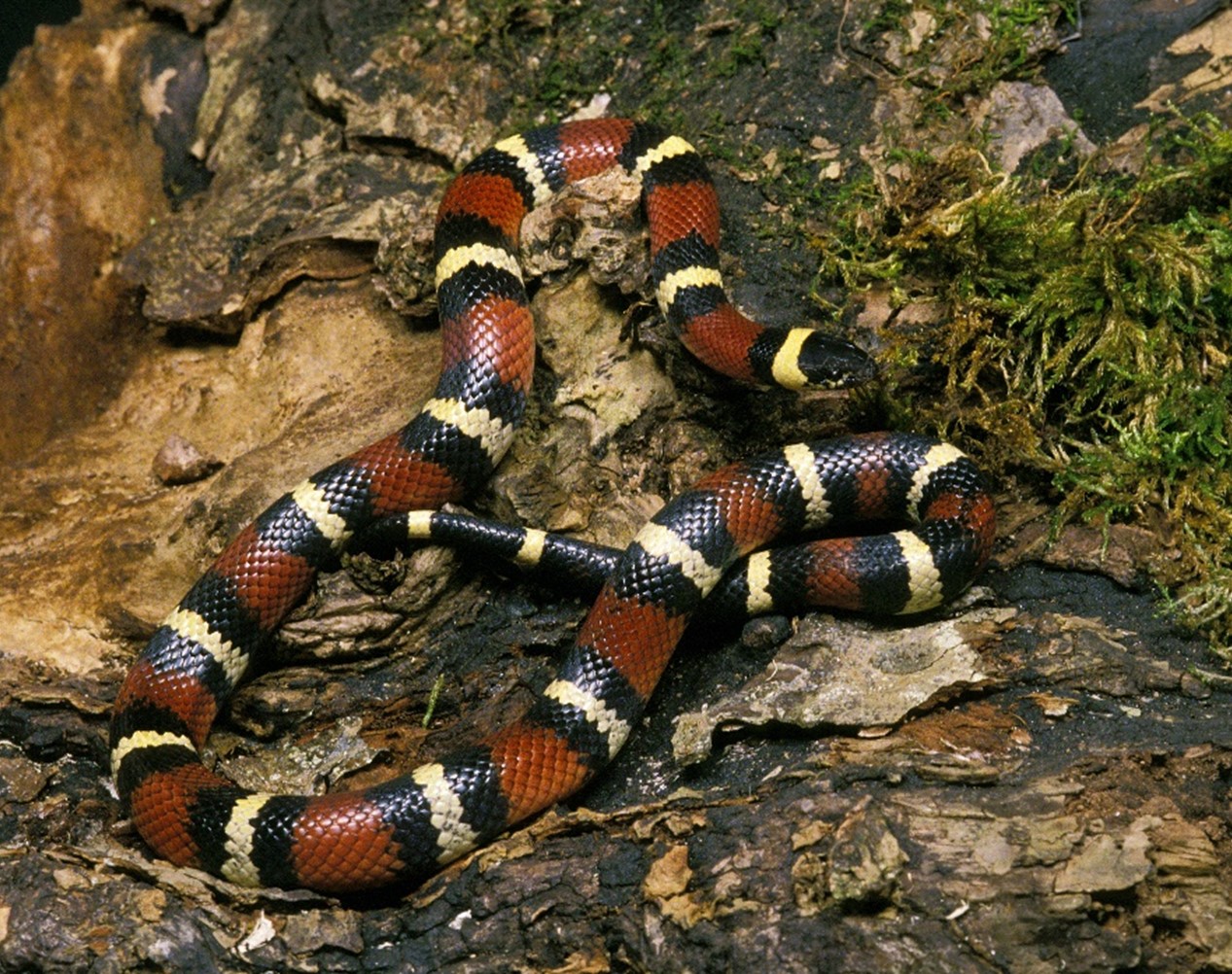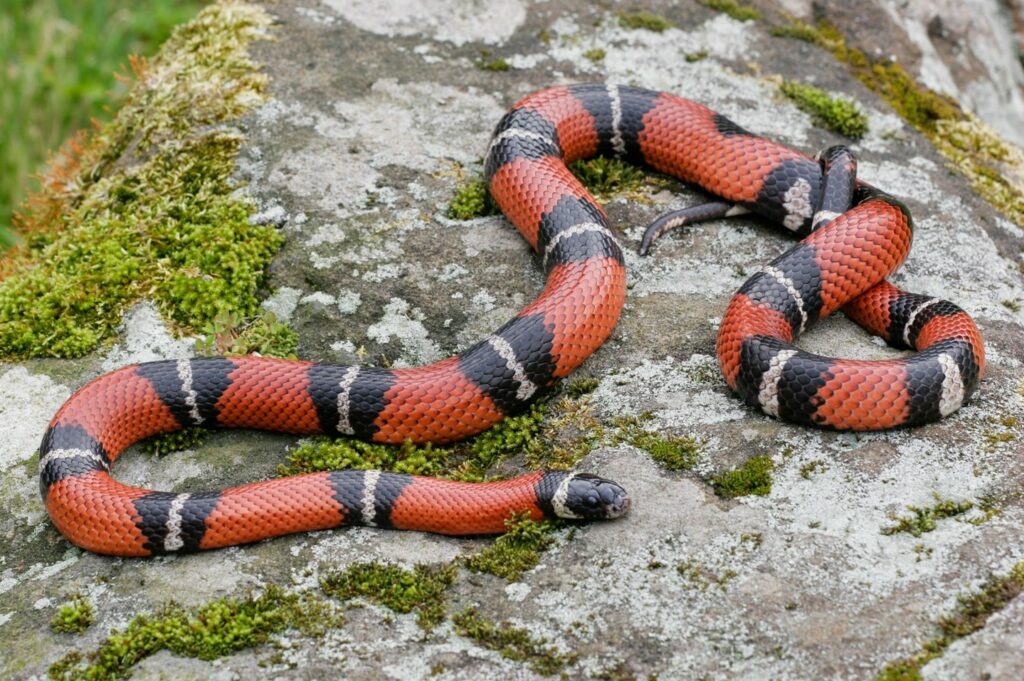Last Updated on January 30, 2024
Many remarkable snakes flourish in the thriving ecosystems of the San Antonio River Watershed, including our native Mexican milk snake (Lampropeltis annulate). These non-venomous constrictors use their mouths to catch prey and carefully squeeze their victim before swallowing it whole. Mexican milk snakes help keep the natural order of things within the watershed by controlling our local population of mice, rats, lizards, and occasionally, other snakes. This species tends to be fairly short in length – only reaching about 24-30 inches (61-76 cm). Mexican milk snakes are nocturnal reptiles and live in semi-arid brush areas – making Central and South Texas an ideal home for these beautiful snakes. They breed during rainy spring evenings, and the females will lay four to ten eggs about 50 days later.
So, why are they called milk snakes? According to stories passed down over the years, it is said that milk snakes got their name from local farmers who believed that the snakes were stealing their cows’ milk. When the farmers were searching for answers as to why their cows were producing less milk than usual, the milk snakes, drawn to the mice and rats in the barn, were a convenient explanation. Luckily, the farmers learned the snakes were hiding in barns to protect themselves from predators and feast on mice and rats, not to harm their cows. This has the added benefit of keeping the vermin population under control and away from the farmers’ crops.
Many of us here in Central and South Texas are familiar with the rhyme, “Red on yellow, kill a fellow. Red on black, a friend of Jack.” This catchy rhyme helps us distinguish the non-venomous Mexican milk snake from the similar-looking venomous Texas coral snake (Micrurus tener). While both of these species are essential to our healthy ecosystem, they are very different animals. This adaptation of an animal to closely resemble another animal, plant, or inanimate object is called mimicry. In this case, the Mexican milk snake uses mimicry to look like the Texas coral snake and appear more dangerous to other predators, encouraging them to stay away! Can’t remember this rhyme? Next time you spot a vivid black, yellow, and red snake, reach for your trusty iNaturalist app to verify its identity before moving any closer.

Snake ID Challenge! One of these snakes is a Mexican milk snake, and the other is a venomous coral snake. Are you able to tell the two species apart?
Even though we might be a little fearful of these slithering critters, they are still crucial to our communities and our San Antonio River. By supporting these animals, we are supporting the health and well-being of our watershed. So, remember: Mexican milk snakes are not just a friend to farmers (or even just Jack), but a friend to all!
_____________________________________________
The River Reach is back!
River Reach is a quarterly, 12-page newsletter that is designed to inform the San Antonio River Authority’s constituents about the agency’s many projects, serve as a communication vehicle for the board of directors and foster a sense of unity and identity among the residents of Bexar, Wilson, Karnes, and Goliad counties.
If you wish to be placed on the mailing list for River Reach, please contact us or complete the form here.





